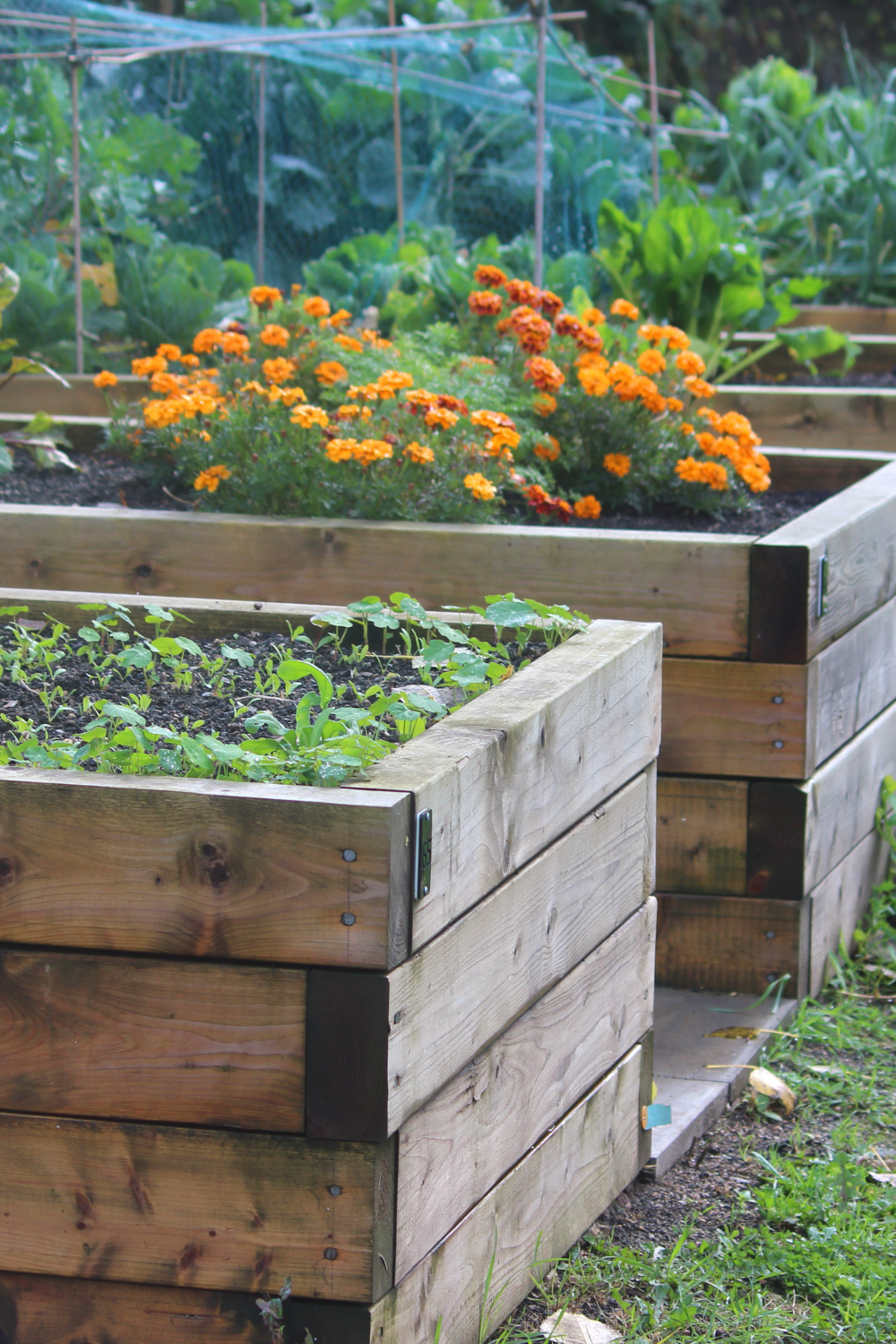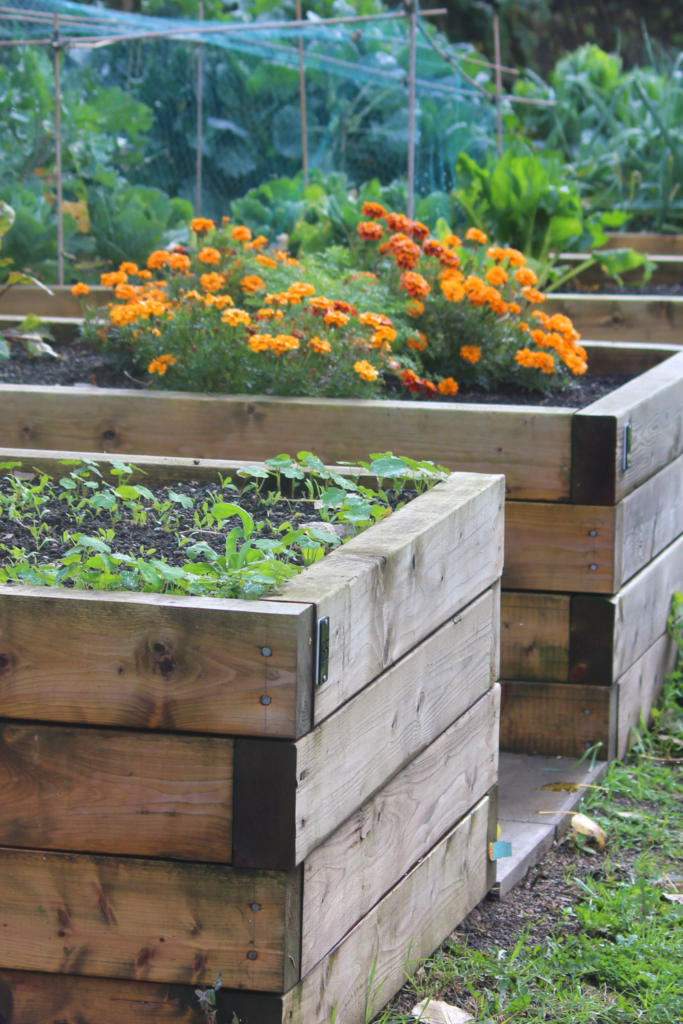As the gardening season approaches, many gardeners are reevaluating how to make their garden more productive and manageable. One popular solution that has gained momentum is shifting to raised garden beds. Whether you’re looking to improve soil quality, reduce back strain, or maximize space, raised garden beds offer a multitude of benefits that can help ensure a fruitful and enjoyable growing season.
If you’ve been considering this method for your garden, now’s the time to explore why raised garden beds are a great choice for many gardeners, how to transition to this style of gardening, and the steps you can take to ensure your garden is ready for success.
Why Choose Raised Garden Beds?
Before we dive into the specifics of how to make the switch, let’s first talk about the why raised garden beds may be a good addition to your garden spaces.
1. Better Soil Drainage and Aeration
One of the main benefits I have found from switching to raised garden beds is the improvement in soil drainage and aeration. In traditional in-ground gardens, soil can become compacted, especially in heavy clay soils, which restricts root growth and water absorption. I have found raised beds give my plants more room to grow and allow water to drain more easily, which is particularly important in preventing root rot and promoting healthy root development.
2. Warmer Soil and Longer Growing Season
Raised garden beds heat up faster than traditional garden soil in the Spring. This makes it easier to start planting earlier in the season and extends your growing time, especially in cooler climates like Canada. By getting a jump-start on your plants, you can maximize your harvest in the short summer months. This is particularly true if you use metal beds over wood ones – but both have advantages and disadvantages.
3. Improved Soil Quality
Raised beds offer the opportunity to create and maintain high-quality soil. I feel like I have better control of the quality of my soil because I essentially create the mix. When you control the soil mix, you can ensure it is nutrient-rich, well-draining, and free of contaminants or pests that may be present in your native soil. This is especially useful for areas with poor or rocky soil.
4. Reduced Weed Pressure
Raised garden beds can significantly reduce the amount of weeding you’ll need to do. Raised beds provide a defined border and higher soil, which makes it harder for weeds to invade. Weeds are also easier to pull when they do appear. This means less time spent battling unwanted plants.
5. Less Strain on Your Back and Knees
If bending and kneeling in your garden is a challenge, raised garden beds are a game-changer. Three years ago, I went from standard 12 inch high raised beds to 48” tall ones. The primary reason why was to make gardening easier for me, especially in anticipation of getting older. The increased height raised gardens offer makes it easier to work with your plants, reducing the strain on your body. With less strain gardening a more enjoyable! If you have physical limitations, raised gardening is for you.
How to Transition to Raised Garden Beds
If you’re ready to make the leap to raised garden beds, here’s a step-by-step guide to help you transition smoothly and set yourself up for a successful growing season.
1. Select the Right Location
Just like traditional gardening, choosing the right spot for your raised garden bed is critical. You’ll want to select a location that:
- Is accessible: Make sure the beds are easy to reach and consider their proximity to water sources for convenient irrigation.
- Receives plenty of sunlight: Most plants, especially vegetables, need 6-8 hours of direct sunlight per day. Choose a sunny spot to ensure your plants get the light they need to thrive.
- Has good air circulation: Avoid areas that are too crowded or shaded by large trees. Good airflow helps prevent fungal diseases and keeps plants healthy.
2. Choose Your Materials
Raised garden beds can be built from a variety of materials, depending on your budget, aesthetics, and desired durability. Some common options include:
- Wood: When I first started out with raised beds, they were made of wood. Cedar and redwood are naturally resistant to rot and are excellent choices for building durable raised beds. Pressure-treated wood is another option, but make sure it’s labeled safe for garden use.
- Stone or Brick: For a more permanent and sturdy solution, you can use stone or brick to build raised beds. These materials are highly durable and give a classic, structured look to your garden.
- Recycled Materials: If you’re on a budget, you can get creative with recycled materials like old pallets, concrete blocks, or even corrugated metal sheets. Just ensure that whatever material you choose is safe for planting.
- Premade Models: You can buy premade boxes that are easy to assemble in both wood and metal options. I made the switch from wood boxes to steel alloy specific for Canadian gardening a few years ago. Premade options help get your garden bed up quickly but require a steeper financial investment.
The size of your raised bed will depend on your space and what you want to grow. A standard size is about 4 feet wide, which allows for easy access from both sides. The length can vary, and most beds are anywhere from 8 to 12 feet long. The height is typically around 12 to 24 inches, but this can vary based on your needs.
3. Prepare the Bed Foundation
Before placing your soil into the raised bed, it’s important to prepare the foundation. This will help prevent weeds from creeping in and provide better drainage.
- Level the Ground: Ensure that the ground is level so that water doesn’t pool on one side of the bed.
- Clear the Area: Remove any grass, weeds, or debris from the area where you’ll be placing the raised bed.
- Lay Down a Weed Barrier: You can use landscape fabric, cardboard, or newspaper as a weed barrier. This will help stop weeds from growing up into your raised bed while still allowing water to drain through.
4. Fill the Bed with Quality Soil
Once the raised bed is constructed and in place, it’s time to fill it with soil. The soil you use will make a significant impact on your plants’ health and productivity. A good mix of organic matter is essential for healthy growth.
A basic raised bed soil recipe consists of:
- 1/3 compost: Compost provides vital nutrients and supports soil microbiota, enhancing plant health.
- 1/3 loamy soil: Loam is rich in nutrients and has excellent drainage, providing the perfect balance of moisture retention and aeration.
- 1/3 vermiculite or perlite: These materials improve soil aeration and drainage while retaining moisture.
Fill the raised bed with this mix, leaving a few inches of space at the top to prevent soil from spilling over. Be sure to water thoroughly after filling the bed to settle the soil.
5. Plan Your Garden Layout
Now that you have your raised bed ready, it’s time to plan what to grow. Consider the following:
- Spacing: Be mindful of how much space each plant needs to grow. Overcrowding can lead to poor air circulation and stunted growth. I like to follow square-foot garden method to make sure everything I plant has sufficient room to grow.
- Companion Planting: Group plants together that support each other. For example, plant basil alongside tomatoes to help repel pests and improve flavor.
- Crop Rotation: If you’ve used raised beds for a few seasons, make sure to rotate your crops to prevent soil depletion and reduce the risk of disease buildup.
6. Prepare for Irrigation
Raised beds tend to dry out faster than in-ground gardens, so it’s important to ensure a consistent water source. Here are some ways to keep your raised beds hydrated:
- Drip Irrigation: Installing a drip irrigation system is a great way to provide consistent water directly to your plants, preventing overwatering and minimizing water waste.
- Soaker Hoses: Another option is to use soaker hoses, which allow water to slowly seep into the soil.
- Mulching: Apply a layer of mulch to help retain moisture and keep the soil cool during hot weather.
Final Thoughts
Switching to raised garden beds is a fantastic way to enhance your gardening experience and create more abundance in your garden. With better soil drainage, improved accessibility, and the opportunity to control soil quality, raised beds provide the ideal environment for your plants to thrive. By taking the time to properly prepare your raised beds—choosing the right location, materials, and soil—you’ll be well on your way to enjoying a flourishing garden this season.
So, gather your materials, plan your garden layout, and get ready to reap the rewards of a productive, beautiful, raised bed garden!
Happy gardening! 🌱


